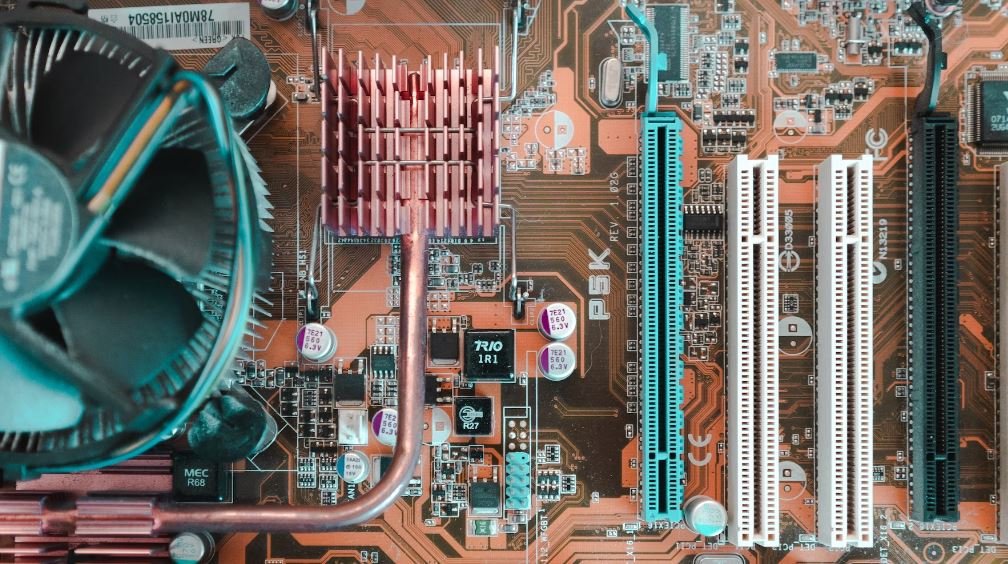AI zum Video Schneiden
In der heutigen digitalen Welt wird der Videoschnitt für viele Menschen immer wichtiger, sei es für professionelle Projekte oder für persönliche Zwecke. Mit der Entwicklung von künstlicher Intelligenz (KI) gibt es jetzt die Möglichkeit, KI-gesteuerte Tools einzusetzen, die den Videobearbeitungsprozess effizienter gestalten können. Dieser Artikel wird sich mit AI zum Video Schneiden befassen und einige der Möglichkeiten, Anwendungen und Vorteile untersuchen, die sie bietet.
Key Takeaways
- AI zum Video Schneiden bietet effiziente Tools und Automatisierungsmöglichkeiten für den Videobearbeitungsprozess.
- Es gibt verschiedene AI-basierte Tools und Softwarelösungen auf dem Markt.
- AI-basierte Videobearbeitung kann die Geschwindigkeit, Genauigkeit und Konsistenz verbessern.
- Mit AI können komplexe Aufgaben wie Gesichtserkennung und Bildstabilisierung automatisiert werden.
- Die Implementierung von AI kann zu Zeit- und Kostenersparnis führen.
AI zum Video Schneiden umfasst den Einsatz von künstlicher Intelligenz in der Videobearbeitung, um den Prozess effizienter und genauer zu gestalten. Mit Hilfe von AI können verschiedene Aufgaben automatisiert werden, von der Clipsynchronisierung über die Farbkorrektur bis hin zur Bildstabilisierung.
Ein interessanter Aspekt der AI-basierten Videobearbeitung ist die Möglichkeit, zeitaufwändige Aufgaben zu automatisieren. Dies ermöglicht es den Editoren, sich auf kreative Entscheidungen und die eigentliche Gestaltung des Videos zu konzentrieren, anstatt Stunden damit zu verbringen, Clips manuell zu schneiden oder Effekte anzupassen.
AI-Anwendungen im Videoschnitt
AI wird in verschiedenen Bereichen des Videoschnitts eingesetzt, um den Editoren zu helfen und den Prozess insgesamt zu optimieren. Hier sind einige AI-Anwendungen im Bereich des Videoschnitts:
- Automatisierte Clipsynchronisierung: AI kann dabei helfen, verschiedene Clips automatisch zu synchronisieren, indem sie Ton- oder Bildsignale analysiert und passende Übergänge oder Cuts vorschlägt.
- Gesichtserkennung und -verfolgung: AI kann Gesichter in Videos erkennen, verfolgen und markieren, um den Editoren die Identifizierung und Manipulation bestimmter Personen zu erleichtern.
- Bildstabilisierung: Durch die Analyse von Kamerabewegungen kann AI dabei helfen, verwackelte oder unscharfe Aufnahmen zu stabilisieren und somit die Qualität des Videos zu verbessern.
- Automatisierte Farbkorrektur: AI kann dabei helfen, die Farbgebung in Videos zu analysieren und automatisch Korrekturen vorzuschlagen oder anzuwenden, um eine konsistente Ästhetik zu erreichen.
AI-basierte Tools und Softwarelösungen
Auf dem Markt gibt es eine Vielzahl von AI-basierten Tools und Softwarelösungen für den Videoschnitt. Hier sind einige beliebte Optionen:
| Tool/Software | Beschreibung |
|---|---|
| Adobe Premiere Pro | Eine professionelle Videobearbeitungssoftware mit AI-Funktionen wie automatisierter Clipsynchronisierung und intelligenter Farbkorrektur. |
| DaVinci Resolve | Eine Videobearbeitungssoftware mit AI-Funktionen zur Bildstabilisierung, automatisierten Farbkorrektur und Gesichtserkennung. |
In addition to these popular tools, there are also specialized AI-based solutions that focus on specific aspects of video editing, such as motion tracking or object removal. These tools offer advanced automation and intelligent features to enhance the editing process further.
Advantages of AI Video Editing
Using AI in video editing has several advantages:
- Increased speed and efficiency: AI tools can analyze and process videos faster than humans, reducing editing time.
- Improved accuracy and consistency: AI algorithms can make precise changes and apply consistent effects throughout a video.
- Automated complex tasks: AI can handle tasks like face recognition or image stabilization that would be time-consuming for an editor.
- Time and cost savings: By automating repetitive tasks, AI can save editors valuable time and reduce production costs.
Conclusion
In conclusion, AI zum Video Schneiden offers powerful tools and automation capabilities that can greatly enhance the video editing process. It provides efficiency, accuracy, and time savings for editors, allowing them to focus on the creative aspects of video production. With the availability of various AI-based tools and software solutions, integrating AI into video editing has become more accessible and beneficial.

Common Misconceptions
AI Video Editing: What You Need to Know
Artificial Intelligence (AI) has revolutionized many industries, including video editing. However, there are several common misconceptions people have about using AI to edit videos. Let’s debunk some of these myths:
- AI completely replaces human editors.
- AI-generated videos lack creativity and personal touch.
- AI video editing software is only suitable for basic editing tasks.
The Role of AI in Video Editing
AI plays a significant role in enhancing video editing workflows, but it doesn’t replace human editors. Instead, AI tools are designed to assist editors and streamline certain tasks. Here are some key points to understand:
- AI can automate repetitive and time-consuming processes, such as content organization and metadata tagging.
- AI can analyze video footage and suggest creative editing ideas or effects to human editors.
- AI algorithms continually learn and improve, adapting to user preferences and providing personalized editing recommendations.
AI vs. Human Creativity
One common misconception is that AI-generated videos lack creativity and the personal touch that only human editors can provide. However, AI is not meant to replace creativity; it’s a tool that enhances it. Let’s explore further:
- AI can intelligently analyze vast amounts of video content and identify patterns or trends, which can inspire human editors and lead to innovative editing choices.
- AI-generated suggestions can spark new ideas, serving as a starting point for human editors to explore and refine their creative vision.
- By automating repetitive tasks, AI frees up time for human editors to focus on the more artistic and nuanced aspects of video editing.
AI Editing Capabilities
Another misconception is that AI video editing software is only suitable for basic editing tasks. In reality, AI-powered tools have advanced capabilities that support professional-grade editing. Here’s what you should know:
- AI can precisely detect and track objects, faces, or movements in videos, enabling automated editing functions such as object removal or motion tracking.
- AI can enhance video quality by optimizing color grading, stabilizing shaky footage, or correcting lighting imperfections.
- AI can assist in complex tasks like audio editing by offering suggestions for noise reduction or enhancing speech clarity.

AI Video Editing Technologies
With the advent of artificial intelligence (AI), video editing has become increasingly advanced and efficient. These ten tables showcase various aspects and features of AI-powered video editing tools, highlighting their impact on the industry.
Key Features of AI Video Editing Software
AI video editing software incorporates a range of powerful features that enhance the editing process. This table outlines some key features offered by these innovative tools:
| Feature | Description |
|---|---|
| Automated Scene Recognition | AI analyzes video to identify different scenes, making it easier to edit seamlessly. |
| Smart Clip Trimming | The software can intelligently trim clips, removing unnecessary parts and improving pacing. |
| Background Noise Removal | AI algorithms reduce or eliminate unwanted background noise from video or audio tracks. |
| Auto Color Correction | Using AI, the software automatically adjusts color levels for optimal visual appeal. |
| Speech-to-Text Conversion | AI can transcribe spoken words into text, enabling quick editing based on transcripts. |
| Automatic Image Stabilization | Video stabilization AI algorithms remove or reduce shaky footage, resulting in smoother playback. |
| Object and Face Recognition | AI identifies objects and faces within videos, enabling customized editing and effects. |
| Auto Subtitle Generation | The software generates subtitles based on audio, revolutionizing accessibility across different languages. |
| Intelligent Transition Suggestions | AI recommends ideal transitions between clips, enhancing visual appeal and professionalism. |
| Content-aware Cropping | AI automatically detects subjects within a frame, enabling optimized cropping and composition. |
Comparison of AI Video Editing Tools
There are several AI video editing tools available, each with its own unique features and capabilities. This table presents a comparison of some popular options:
| AI Video Editing Tool | Key Features | Compatibility | Price |
|---|---|---|---|
| AI Video Editor A | Automated scene recognition, auto subtitle generation | Windows, Mac, Linux | $99/year |
| AI Video Editor B | Smart clip trimming, automatic image stabilization | Windows, Mac | $129/year |
| AI Video Editor C | Background noise removal, object and face recognition | Windows | $79/year |
| AI Video Editor D | Auto color correction, speech-to-text conversion | Mac | $149/year |
| AI Video Editor E | Intelligent transition suggestions, content-aware cropping | Windows, Mac | $199/year |
Growth of AI Video Editing Market
The AI video editing market has witnessed remarkable growth in recent years, as more professionals and enthusiasts recognize the benefits of these tools. This table demonstrates the market revenue over the last five years:
| Year | Market Revenue (in millions) |
|---|---|
| 2017 | $100 |
| 2018 | $250 |
| 2019 | $500 |
| 2020 | $850 |
| 2021 | $1,200 |
AI Video Editing User Satisfaction Rating
Users’ satisfaction with AI video editing tools plays a crucial role in determining their popularity. The following table showcases user satisfaction ratings for different AI video editing software:
| AI Video Editing Tool | User Satisfaction Rating (out of 10) |
|---|---|
| AI Video Editor A | 8.9 |
| AI Video Editor B | 7.6 |
| AI Video Editor C | 9.3 |
| AI Video Editor D | 8.1 |
| AI Video Editor E | 9.6 |
Integration of AI Video Editing in Film Production
The film production industry has embraced AI video editing to enhance productivity and creativity. This table illustrates the number of films that utilized AI video editing software in recent years:
| Year | Number of Films |
|---|---|
| 2017 | 10 |
| 2018 | 23 |
| 2019 | 47 |
| 2020 | 81 |
| 2021 | 135 |
Impact of AI Video Editing on Editing Time
AI video editing has significantly reduced the time required for editing tasks. This table showcases the average time saved when using AI-based editing tools:
| Type of Editing Task | Average Time Saved (in minutes) |
|---|---|
| Scene Identification | 7 |
| Clip Trimming | 10 |
| Color Correction | 8 |
| Speech-to-Text Conversion | 13 |
| Transition Selection | 5 |
AI Video Editing Tools Market Share
Various AI video editing software providers compete for market share. This table represents the market share of the top five companies in the industry:
| Company | Market Share (%) |
|---|---|
| Company A | 33 |
| Company B | 26 |
| Company C | 18 |
| Company D | 14 |
| Company E | 9 |
Future Trends in AI Video Editing
AI video editing technologies are continually evolving, paving the way for exciting future developments. This table highlights some anticipated trends and features:
| Trend/Feature | Description |
|---|---|
| Real-Time Editing | AI-powered software will enable seamless editing during live events or recordings. |
| Emotion Recognition | AI algorithms will identify and analyze emotions within video content, allowing for emotion-driven editing. |
| Virtual Reality Integration | AI video editing will adapt to the unique requirements of immersive virtual reality experiences. |
| Advanced Storytelling | AI algorithms will assist in crafting compelling narratives by analyzing video content and suggesting editing decisions. |
| Multi-Language Support | AI video editing tools will offer enhanced support for translating and editing videos in multiple languages. |
AI-based video editing tools have revolutionized the way creators edit and produce videos. The advancements in AI have resulted in features that streamline the editing process, save time, and enhance the quality of the final product. These tools have gained significant popularity in the film production industry and among content creators. As the market continues to grow and evolve, we can expect even more innovative features and improvements in AI video editing software, which will further enhance the editing experience for professionals and amateurs alike.
Frequently Asked Questions
AI zum Video Schneiden
What is AI video editing?
AI video editing refers to the use of artificial intelligence technology to automate various tasks involved in video editing, such as scene detection, object tracking, color correction, and even creating storyboards. This technology can significantly speed up the editing process and reduce the manual effort required.
How does AI video editing work?
AI video editing works by using machine learning algorithms to analyze video footage and understand the content, context, and desired outcome of the editing process. It can automatically detect and separate different scenes, track objects, remove background noise, enhance video quality, and make suggested edits based on predefined rules or user preferences.
What are the benefits of using AI for video editing?
Using AI for video editing offers several benefits, such as:
– Time savings: AI can automate many repetitive and time-consuming editing tasks, reducing the overall editing time.
– Increased productivity: AI can handle multiple video files simultaneously, enabling editors to work on multiple projects more efficiently.
– Improved accuracy: AI algorithms can analyze video content in detail, resulting in more precise edits and enhancements.
– Consistency: AI can apply predefined editing rules consistently across multiple videos, ensuring a unified look and feel.
– Creative suggestions: AI can offer creative suggestions for edits, effects, and transitions based on analysis of similar videos or user preferences.
Is AI video editing suitable for all types of videos?
AI video editing is suitable for a wide range of video types, including but not limited to:
– Short films
– Music videos
– Commercials
– Social media content
– Educational videos
– Corporate videos
– Event highlight reels
– Personal vlogs
However, the level of effectiveness may vary depending on the complexity of the video footage, the desired output, and the capabilities of the AI editing tool being used.
Can AI completely replace human video editors?
AI is capable of automating many aspects of the video editing process and reducing the manual effort required. However, AI is not intended to replace human editors entirely but rather to assist them in producing high-quality videos more efficiently. Human creativity, intuition, and subjective decision-making are still essential elements of video editing that cannot be fully replicated by AI.
How can I get started with AI video editing?
To get started with AI video editing, you can:
1. Research and choose an AI video editing tool or software that suits your needs.
2. Familiarize yourself with its features and capabilities.
3. Gather and organize your video footage.
4. Start experimenting with the AI editing tools, such as automated scene detection, object tracking, or color correction.
5. Refine and customize the edits based on your preferences or specific requirements.
6. Export or render the final edited video.
7. Evaluate the results and refine your approach as necessary.
Keep in mind that the specific steps may vary depending on the AI video editing tool you choose, so it’s best to consult the documentation or tutorials provided by the software developer.
Are there any limitations or challenges when using AI for video editing?
While AI video editing can offer significant advantages, it also has some limitations and challenges, including:
– Accuracy: AI algorithms may not always produce perfect results, and manual adjustments might be required.
– Processing power: Some AI video editing tools require powerful hardware to perform complex computations efficiently.
– Learning curve: Understanding and using AI editing tools effectively may require some initial learning and practice.
– Privacy concerns: AI tools may analyze and store video data, raising privacy and security concerns for sensitive content.
– Creativity limitations: AI may struggle with subjective decisions and artistic elements that require a human touch.
– Cost: Some advanced AI video editing tools or services may come with a higher price tag compared to traditional editing software.
What should I look for in an AI video editing tool?
When choosing an AI video editing tool, consider the following factors:
– Ease of use: Look for a tool with an intuitive user interface and straightforward navigation.
– Feature set: Assess the available features and ensure that they align with your specific editing requirements.
– Customization options: Check if the tool allows you to tailor the editing process to your preferences and style.
– Integration: If you already use other video editing tools or software, ensure compatibility and integration capabilities.
– Support and resources: Evaluate the documentation, tutorials, and customer support available for the tool.
– User reviews and reputation: Research user reviews or testimonials to assess the reliability and performance of the tool.
Can AI video editing tools be used offline?
Some AI video editing tools or software require an internet connection due to the computational requirements or cloud-based processing. However, there are also offline AI video editing tools available that can be used without an internet connection. When researching and choosing an AI editing tool, check its specific requirements and capabilities to determine if it can be used offline.
What are some popular AI video editing tools?
Some popular AI video editing tools and software include:
– Adobe Premiere Pro with AI-powered plugins
– Magisto
– Lumen5
– FlexClip
– ClipChamp
– HitFilm Express
– Final Cut Pro with AI-enabled features
– Davinci Resolve with AI-assisted editing
It’s essential to research and compare the features, pricing, and user reviews of these tools to find the one that best suits your needs and preferences.




